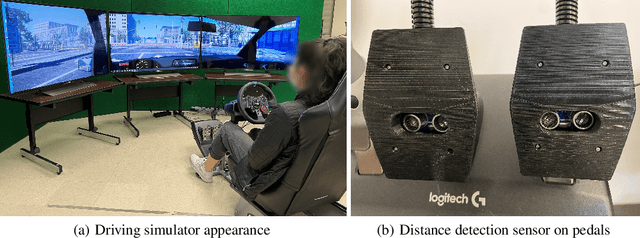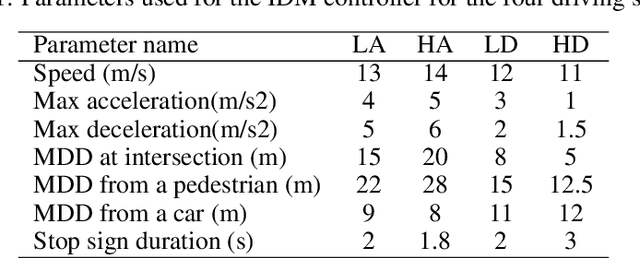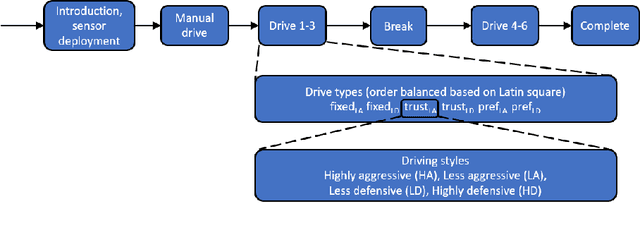Zhaobo K. Zheng
Identification of Adaptive Driving Style Preference through Implicit Inputs in SAE L2 Vehicles
Sep 21, 2022



Abstract:A key factor to optimal acceptance and comfort of automated vehicle features is the driving style. Mismatches between the automated and the driver preferred driving styles can make users take over more frequently or even disable the automation features. This work proposes identification of user driving style preference with multimodal signals, so the vehicle could match user preference in a continuous and automatic way. We conducted a driving simulator study with 36 participants and collected extensive multimodal data including behavioral, physiological, and situational data. This includes eye gaze, steering grip force, driving maneuvers, brake and throttle pedal inputs as well as foot distance from pedals, pupil diameter, galvanic skin response, heart rate, and situational drive context. Then, we built machine learning models to identify preferred driving styles, and confirmed that all modalities are important for the identification of user preference. This work paves the road for implicit adaptive driving styles on automated vehicles.
 Add to Chrome
Add to Chrome Add to Firefox
Add to Firefox Add to Edge
Add to Edge